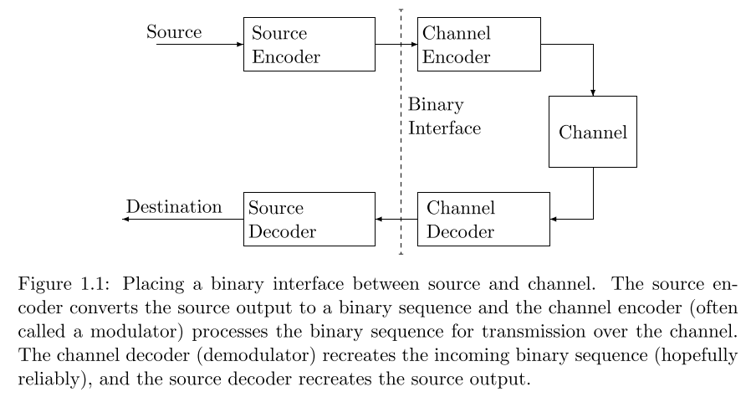LESSON 1-Introduction
Keywords: Communication system, Channel model, Channel capacity by Shannon
1. Two fundamental architectural principles are standardized interfaces and layering.
A standardized interface allows the user or equipment on one side of the interface to ignore all details about the other side of the interface except for certain specified interface characteristics. The idea of layering in communication systems is to break up communication functions into a string of separate layers.
2. Major layering of all communication systems:

3. General channel model- linear Gaussian channel:
The input waveform X(t) is first filtered in a linear filter with impulse response h(t), and then independent white Gaussian noise Z(t) is added.

A better model for mobile communication is to replace the time-invariant filter h(t) in Figure 1.5 by a randomly-time-varying linear filter, H(t, τ), that represents the multiple paths as they change in time.
Here the output is given by:

4. Channel capacity by Shannon:
If I don’t have noise, there is no constrains of how much data I can send. However, in fact with a bandwidth constraint, the capacity is:

The input power is limited to P, the bandwidth limited to W, and the noise power per unit bandwidth is N0, then C is the capacity (in bits per second).


